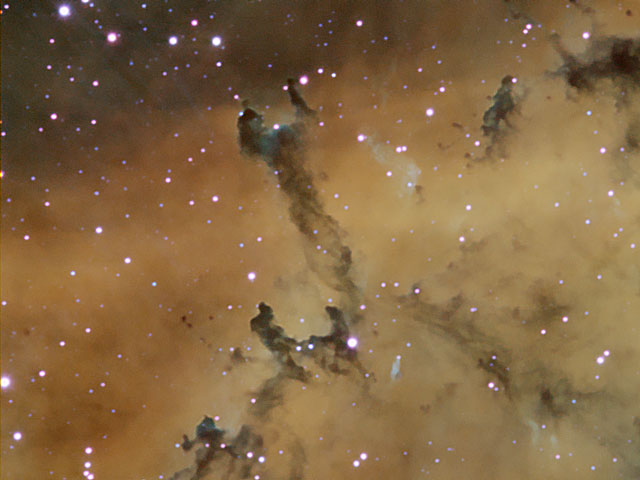
|
Credit & Copyright: Ken Crawford
(Rancho Del Sol Observatory)
Explanation:
What creates the cosmic dust sculptures in the Rosette Nebula?
Noted for the common beauty of its
overall shape, parts of the
Rosette Nebula, also known as NGC 2244,
show beauty even when viewed up close.
Visible above are
globules of dark
dust and gas that are slowly being
eroded away by the energetic light and winds by nearby
massive stars.
Left alone long enough, the
molecular-cloud globules
would likely form stars and planets.
The above image was taken in very specific colors of
Silicon
(shaded red),
Hydrogen
(green), and
Oxygen (blue).
The Rosette Nebula spans about 50
light-years across, lies
about 4,500 light-years away,
and can be seen with a small telescope towards the constellation of Monoceros.
|
January February March April May June July August September October November December |
| |||||||||||||||||||||||||||||||||||||||||||||||||||||||
NASA Web Site Statements, Warnings, and Disclaimers
NASA Official: Jay Norris. Specific rights apply.
A service of: LHEA at NASA / GSFC
& Michigan Tech. U.
Based on Astronomy Picture
Of the Day
Publications with keywords: dust - Rosette Nebula - NGC 2237
Publications with words: dust - Rosette Nebula - NGC 2237
See also:
